I’m not a morning person. A 7 a.m. trico hatch? No way. Give me an evening Drake hatch any day. Tailing reds at sunrise? Not a chance. I’ll be there at sunset.
But my perspective on early-morning fishing all changed one Sunday when I met Dan Decibel for a late December trip to Flamingo.
I called him the night before from my hotel in Homestead. It was late. I asked what time we should meet. Thinking we’d meet at 7 or 8 AM, Dan suggested 5. I set the alarm for 4:15 and made sure the coffee pot worked. Four hours later, Dan’s silver truck pulled into the hotel parking lot, a Gheenoe Low Tide in tow.
Sustained by Red Bull and breakfast bars, we drove toward Florida City. About an hour later, we arrived in Flamingo, the southernmost point of Everglades National Park, greeted by hordes of blood-sucking mosquitoes.

Decibel, a native Cuban, who can go days without a wink of sleep, was buzzing. “Once you pass these gates, everything changes,” he said.
As the winter sun peeked over the cypress trees, my expectations began to waver and began to think a half day would be more than sufficient. Certainly, I could muster enough energy to last that long, long enough not to embarrass my host.
As we headed through a canal that opened up into Coots Bay, the Glades awoke from their slumber. Ducks arrived followed by an army of pelicans ready for the morning feed over the glassy swath of water. They were ready to hunt. So was I. Invigorated by thoughts of acrobatic tarpon, feisty snook and tantalizing redfish tails, I felt a surge of returning energy.
The plan was to stay for the morning, but we fished till 5, as a four-hour trip quickly morphed into 10 hours on the water.
We fished for tarpon, snook, reds and black drum. It was all sight fishing. All day. This is rare, even for Florida. I’m a Florida native, have fly fished for nearly 30 years and have written a book about fly fishing in Tampa. And I’ve found places to sight fish, but not all day.

Though slow at first, the bite surged with the incoming tide. In all, we got five different species to eat – red and black drum, shark, snook and jack crevalle.
The black drum were fickle. Clearly the prom queens of the flat, they barely looked at a fly. The reds were more willing to tango. So were the snook.
We tried gurglers for tarpon, but for some reason, we didn’t see many rollers that morning. The issue wasn’t the fly; it was more timing. The big guys just weren’t home. It happens.
Off went the gurgler. I opted instead for the EP baitfish, camo green on the top, white on the bottom. It’s a great for fly snook, reds and tarpon throughout the Glades and much of South Florida. The snook responded. A fish took, I set the hook and it was on. Our Kodak moment was lost when too much side pressure led to a snapped leader, but slugging it out with the snook envigorated us further. On to the reds.
There were plenty of tails. but the reds weren’t cooperating. Decibel suggested a big pink baitfish pattern as a remedy to the reds’ refusals of the EP crab we I had tied on. I hate big flies because they’re hard to cast in the wind and the Glades, unfortunately, have their share of big, open water. Casting into a headwind is often a must.

The garish fly got the reds’ attention. Sometimes it’s not a matter of matching the food source, but rather getting the fish’s attention. Mission accomplished.
Fishing rarely yields mulligans, but in retrospect, I would have gone with a gurgler for the tailers. Aaron Adams of Bonefish & Tarpon Trust suggested this. The theory is that reds are often so consumed with crabs in the grass that it’s almost impossible to put your fly in front of the fish’s face and not get hung up in the grass. A gurgler, even though it’s a topwater fly, will often elicit a strike. It doesn’t make sense, but it can work. I should have tried it.
The fishing in the Everglades is not easy. You’ll get plenty of shots, but you best be on your game with accurate casts. A little elbow grease doesn’t hurt, either. Fish both tides -- incoming and outgoing -- if you can. I prefer incoming because I like to see the flat flood -- and you don’t have to worry about getting stranded.
In between runs to Florida Bay and Snake Bight, we saw two bald eagles and skirmished with a python, who evidently was not receptive to being photographed up close and personal as he left the mangroves for open water. For a few seconds, the big snake looked as if he might climb in the Gheenoe but peeled off at the last second.

After avoiding a reptile ruckus, we fished a big chunk of Snake Bight as sight-casting opportunities for reds, snook and black drum abounded. Sight fishing usually involves sporadic doldrums during the hunt, but for a three-hour stretch fish found us from every direction during the flood. By 4, the sun started its afternoon descent, the tide started to wane and it was time to go.
We were both exhausted, backs aching and shoulders sore. But a good day on the water had already begun to heal us.
Jupiter was calling me home and Decibel, who hadn’t gotten a full night’s sleep in three days, was headed back to Flamingo Monday morning, before his afternoon shift in Miami.
“Back to the rat race,” he said. “Once you pass these gates, everything changes.”
Logistics
Located about an hour from Miami, the Everglades extend from Lake Okeechobee to Florida Bay along Florida’s southern peninsula. Known as the River of Grass, the vast wetlands are comprised of a diverse ecosystem. Where else can you see an American crocodile and an alligator in a single visit? How about a roseate spoonbill and a bald eagle?
The Everglades National Park stretches toward both coasts of Florida and covers 1.5 million acres over three Florida counties -- Monroe, Dade and Collier -- despite occupying only around 25 percent of the original extent of The Everglades.. There are boat ramps at three entrances -- Flamingo, Chokoloskee and Everglades City. Flamingo, in fact, has a marina.
You can go solo, but it’s best to go with a guide or a knowledgeable buddy first. The tides and terrain can be tough to navigate and it’s easy to get lost, so bring your GPS. Bug spray and sunscreen are essential.

As for a boat, a shallow-running skiff is a requirement. Hell’s Bay, Maverick and Hewes are popular choices.
For gear, you’ll need an 8-weight rod with a weight-forward floating line. I keep leaders simple with two sections, 4-5 feet of 40-pound mono connected to 4 feet of 20-pound fluoro. You can go lighter on the second section, but it’s not often necessary. This setup will handle most of what you catch. If bigger tarpon are on the agenda, go heavier.
As far as clothing, go light. South Florida is warm year round, but it’s best to be prepared with a rain jacket for spring and summer storms and a windbreaker for those winter morning runs when the wind can be brisk on the open water.
As long as you don’t stray too far, navigation is fairly straight forward. Channel markers lead the way to and from the Flamingo ramp. Poling and paddling are musts in most of the better spots.
In 2011, the ENP initiated poll and troll zones to preserve the seagrass beds. Although few would argue with the objective, the implementation of the zones has made large areas of prime fishing water largely inaccessible.
You can fish Snake Bight, for instance, but be prepared for a grueling session on the poling platform. It’s not as if you can buzz in and out. Once you’re in a big, restricted zone, you’re there for a few hours, at least. Running and gunning from spot to spot is not an option.

As for flies, go with basics for snook, redfish and seatrout. Years ago, you could run into a bonefish or permit in Florida Bay, but those days are largely gone, so adjust the fly box accordingly. An EP baitfish, Schminnow, EP crab and a gurgler will cover most of your needs.
The game is largely sight fishing over shallow clear water. Everglades fish can be fickle. Casting accuracy is important, but so is presentation. Don’t make them chase and hope for the best. Feed them.
I made the mistake of yanking the fly away from several fish, hoping to entice a take. Instead, I should have let them find the fly and eat. Adrenalin can take over when you see a fish ponder your offering. Try to stay calm, and you will be rewarded.
Angling options abound in the Glades. You can fish from a canoe or skiff in open water or in the backcountry, in freshwater or salt. A couple spots to consider:
Flamingo
About 90 minutes from Miami, Flamingo probably is the most popular venue in the Everglades. Its appeal is its versatility. In Florida Bay, you have the chance to catch the Big Five -- redfish, snook, tarpon, bonefish and permit -- in all in a single trip. However, the chance of pulling off such a feat is slim. Bonefish and permit populations have dropped dramatically the past four, five years. The primary blame has been attributed to the freeze of 2010 and declining water quality. Nevertheless, Flamingo and the water near Florida Bay offer exceptional sight fishing year round.
Chokoloksee
Located on Florida’s West Coast, about two-and-half hours from Sarasota, Chokoloskee doesn’t consistently yield the sight fishing that Flamingo does, but what you can count on is ample opportunity for the experience of a remote wilderness adventure. You’re not going to see a radio tower. Cell phones are not an option. The wildness of the venue provides a glimpse of what Florida used to look like. This is not to say the fishing is easy, because it’s not. As a friend of mine likes to say, “The more spider webs you have to go through, the more fish you’ll find.”
Tamiami Trail/Alligator Alley
These two thoroughfares cut through the southern peninsula of Florida. Alligator Alley connects Naples to Fort Lauderdale; the Tamiami links Tampa to Miami. Both provide good opportunities to fish on foot or by canoe. Because of traffic, the best strategy is to park at a nearby boat ramp and walk the banks. Fall and winter are best when the afternoon thunderstorms are gone and the water levels drop, concentrating the fish. Tarpon, snook and bass are the main targets. Cast toward the structure and shadows. Hold on once the hook is set.
Count on the usual options -- and a bonus -- exotics: Peacock bass, Mayan Cichlids and Oscars. For these fish, go light, a 3, 4-weight rod with a short leader. A good fly of choice is the Myakka Minnow, a pattern developed by Sarasota guide Steve Gibson.
If you go to the Everglades, plan ahead. Close-by accommodations are limited. I stayed in Homestead, which is about an hour from Flamingo. If you stay in Miami, count on an additional hour in the car. Miami offers more hotel options. Homestead is closer and is free of the South Florida traffic snarl. It’s a tradeoff.
Regardless of where you stay, the effort to get to the Everglades is worth it. It was on my bucket list far too long. I’ll be back -- soon.




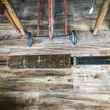

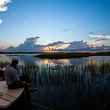
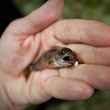
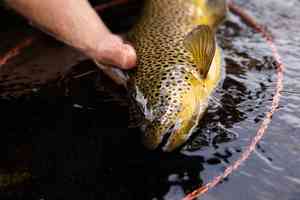

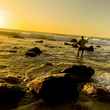

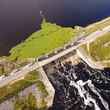

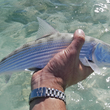
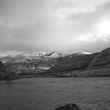



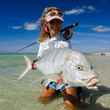
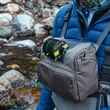



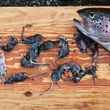
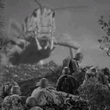
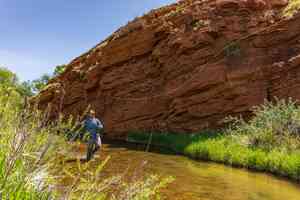
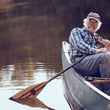

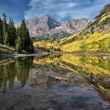
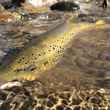
Comments
Joe holsinger replied on Permalink
Remarkable article and 100% consistent with me memories after living in Lauderdale for 10 years. Makes me willing to schedule a trip back….but can do without the dreaded mosquitoes
Pages